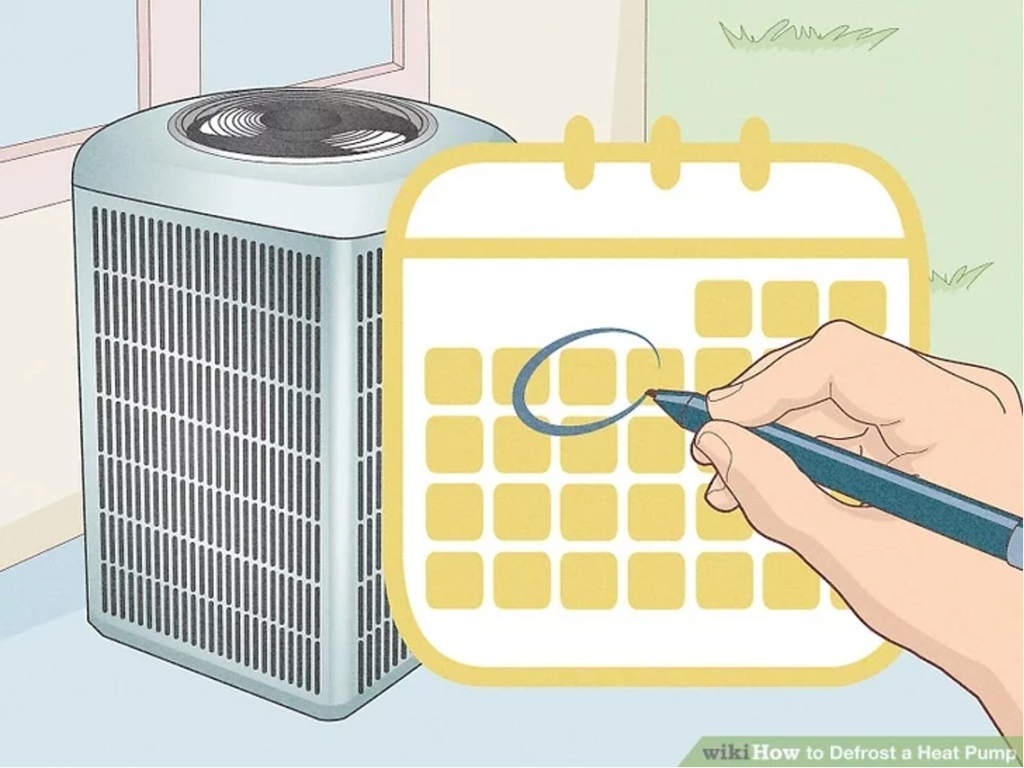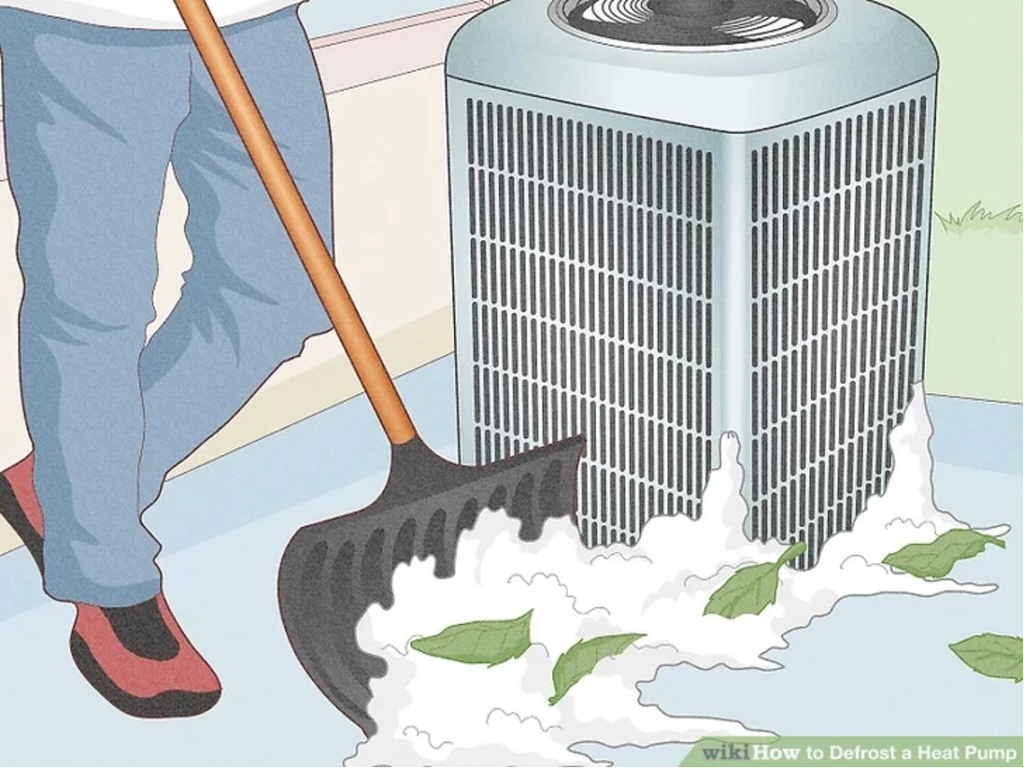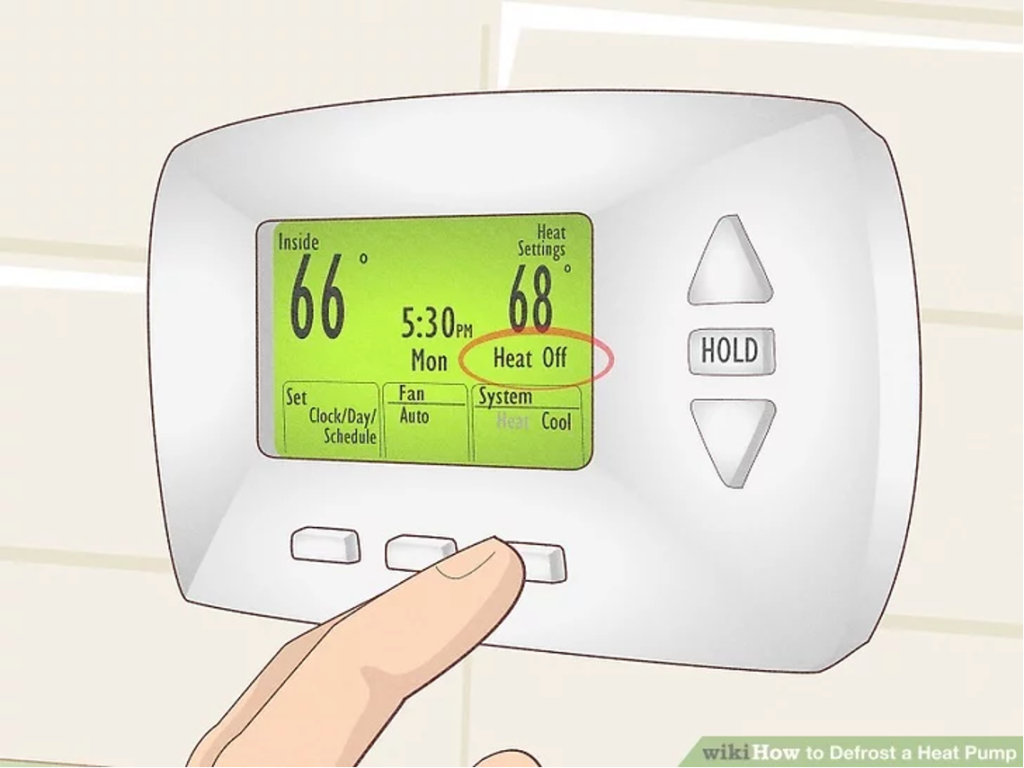Heat Pump
Heat pumps are a common means of heating homes and apartments using electricity rather than natural gas. In northern climates or during periods of extreme cold, the coils on the heat pump can freeze. If ice continues to build up on the pump, it can become damaged and eventually break. Most heat pumps come equipped with a defrost sensor and can melt off ice as it begins to form
Method 1 :
Allowing the pump’s frost to run
1. Inspect the heat pump coils for ice buildup daily during cold weather.
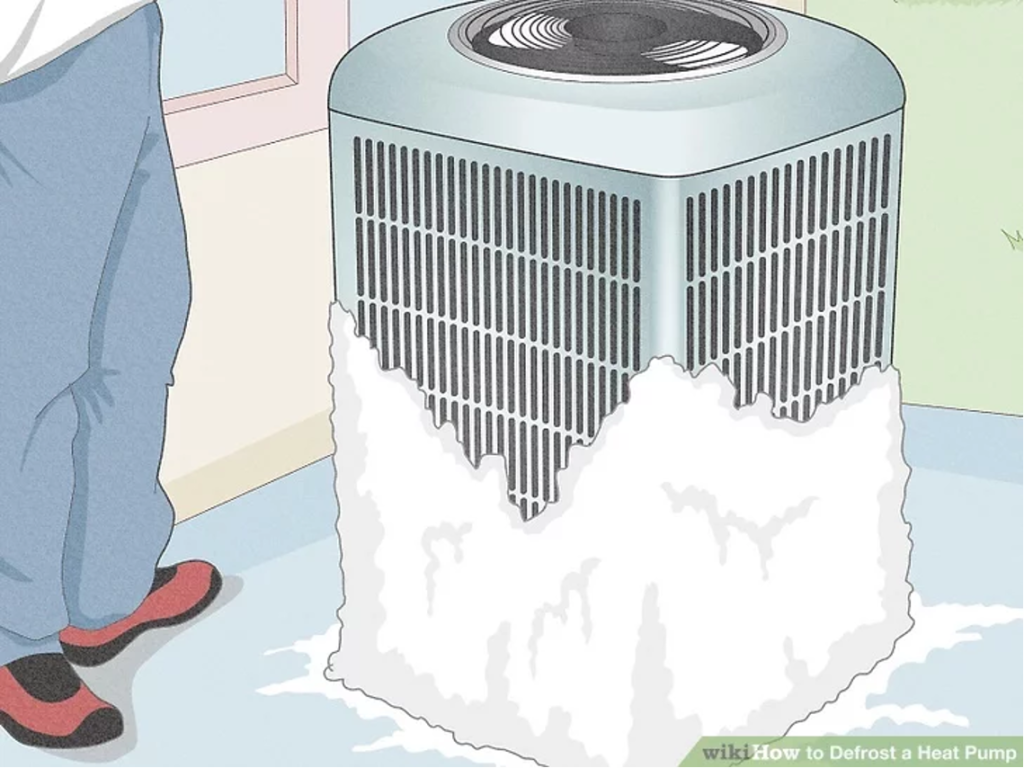
If you’re experiencing a cold winter and daily temperatures stay below 32 °F (0 °C), you should take a look at the heat pump every day. Properly functioning heat pumps may develop a thin coat of frost during cold weather. This is normal and nothing to worry about. However, if actual ice starts to build up on the heat-pump coils and on the top of the heat pump, you’ll need to defrost the pump.
– Look outdoors by your home to find the heat pump. The heat pump is a large metal unit that looks very similar to an air conditioning unit.
2. Let the heat pump defrost itself if it’s only covered with thin ice
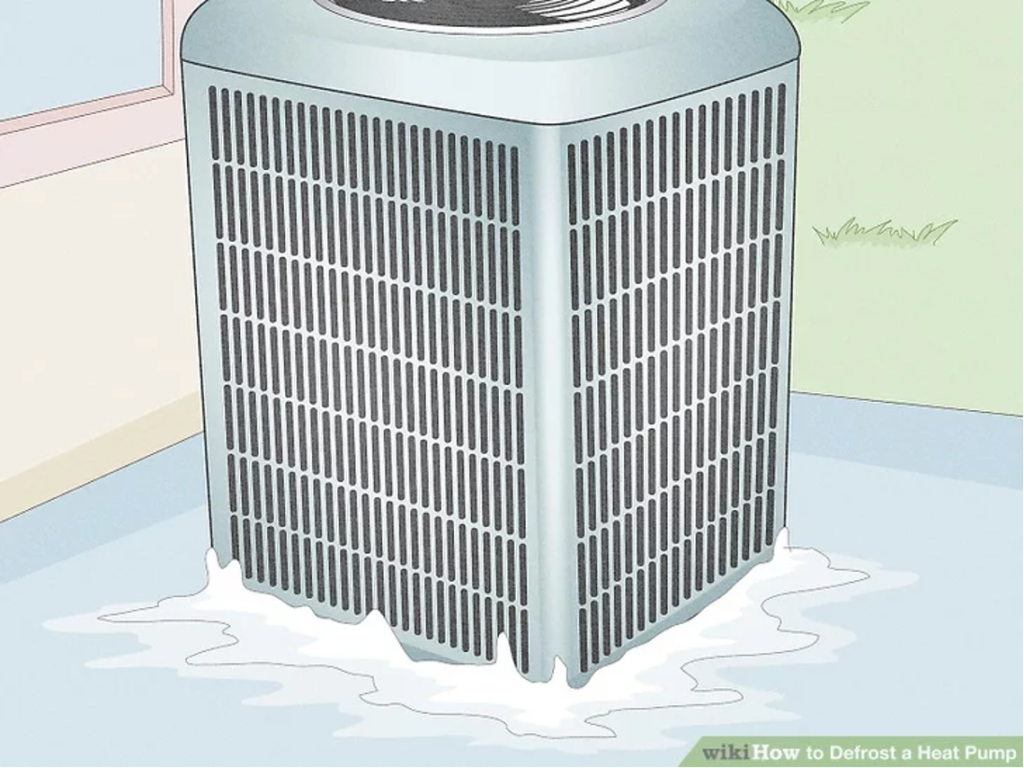
If the pump is covered only with a layer of frost or with less than 1⁄16 inch (0.16 cm) of ice, it can defrost itself. Heat pumps come with a built-in defrosting component that allows them to melt off accumulating frost during cold weather. As long as the ice buildup is minimal, the heat pump can defrost itself
• Most heat pump models will indicate when they’re in defrost mode on the wall-mounted user module in your home.
• You’ll also be able to tell when the defroster is running, since it produces a loud whirring noise.
• During a cold winter, the heat pump may defrost itself every 30–90 minutes.
3. Turn the fan on to engage the defrost function.
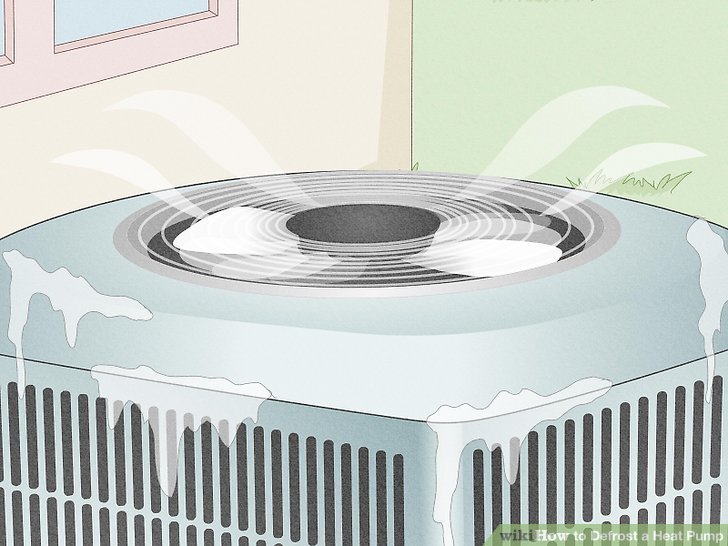
Some models of heat pump may not be able to defrost themselves while the fan is off. Turning on the fan allows the pump to run hot liquid through the pump compressor and melt off frost or ice. Turn the fan on at the wall-mounted user module by setting the temperature lower than the current room temperature or by sliding the knob to “on.”
- Consult the pump’s user manual to find out if the defrost function only works when the fan is on. Note that, when the defrost is running, the fan won’t blow air into the house even when it’s set to the “on” position until the defrost has finished.
- Skip this step if your heat pump can go into defrost mode when the fan is off.
- You’ll also be able to tell when the defroster is running, since it produces a loud whirring noise.
- During a cold winter, the heat pump may defrost itself every 30–90 minutes.
4. Contact an HVAC repair specialist if the pump doesn’t defrost itself.

If the heat pump unit continues to build up ice after the defrost has run, there may be a serious mechanical problem. Contact a specialist in your area, and describe the problem to them over the phone or in person. The specialist can inspect the unit and make whatever repairs are needed.
- If you don’t already have a preferred HVAC repair mechanic, look online to find a specialist near you. Try searching for something like, “HVAC repair near me.”
Method 2 : Preventing the Heat Pump from Freezing
1. Schedule annual maintenance appointments for your heat pump.

You can schedule maintenance by contacting the heat pump’s manufacturer. Or, ask a local HVAC specialist to come to your home and inspect the unit. A professional will be able to spot and fix any problems with the unit. Common problems that can lead to a heat pump freezing include:
- Blockages caused by dirt and debris.
- Insufficient refrigerant in the heat pump system.
- Poor insulation in the pump.
2. Clear snow, leaves, and other debris from the heat pump regularly.

The air unit needs to be able to draw in air in order for the system to work. Use a snow shovel or a broom to brush the top of the heat pump box. If the top of the heat pump is blocked by snow or ice, the airflow will be severely restricted.This, in turn, can lead to the heat pump freezing.
Also, if the heat pump is covered in leaves during a cold autumn, brush these off with a broom as well.
3. Use the heat pump less to reduce your heat use during the winter.

The heat pump will be less likely to freeze up if you decrease the amount you use it. Heat pumps freeze most frequently when they’re constantly producing hot air to heat an interior space. Ways to keep warm in cold weather without blasting the heat include.
- Wearing sweaters or sweatpants indoors.
- Making sure that all doors and windows seal shut.
- Blocking drafts around windows and doors with weather stripping.
- Installing underfloor and cavity insulation to prevent the home from losing heat.


